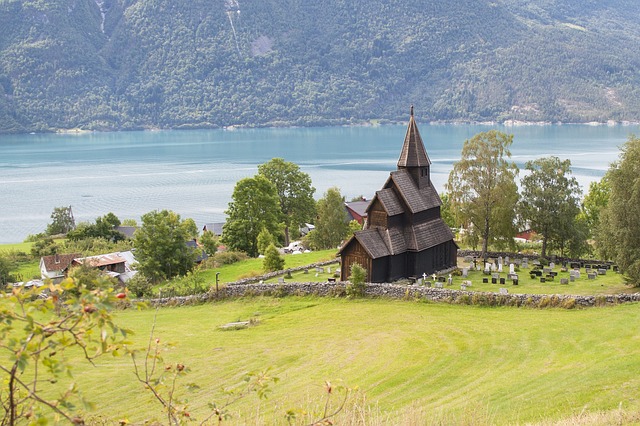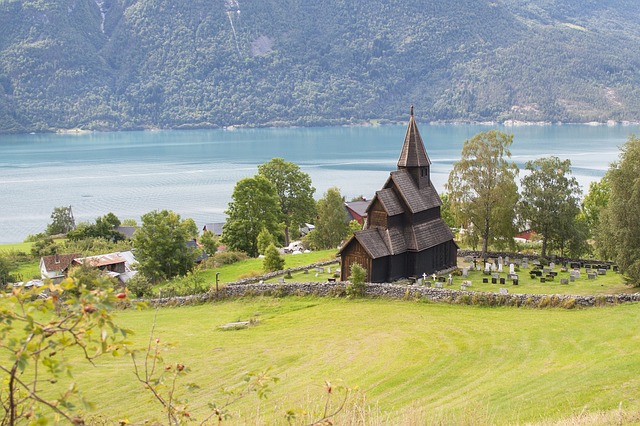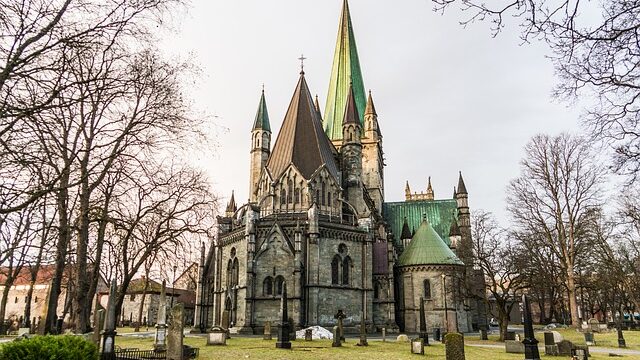Urnes Stave Church was built in Norway in the 12th century and was registered as a World Heritage Site in 1979.
Located near a beautiful inlet created by the nature of Nordic countries, the scenery is spectacular.
In this article, I want to introduce Urnes Stave Church, a Norwegian historical building with a majestic appearance and unique decorations.
Information on Urnes Stave Church
Urnes Stave Church is a wooden church built in Sogn og Fjordane, southwestern Norway.
It is located in a remote area of unspoiled natural beauty.
Urnes Stave Church sits atop a 120-meter-high cliff.
From where the church stands, you can see the beautiful fjord created by glaciers and lakes, known as Lustrafjord.
The church is also known as the “Queen of Stavkirke” because of its dignified appearance atop the cliffs against the backdrop of the magnificent nature of Nordic countries.
“Stav” means “vertical pillar” in Norwegian, and “Kirke” means “church.
The oldest existing stave church in existence

Urnes Stave Church is a wooden church classified as a stave church built in a unique Norwegian architectural style.
Stave churches are constructed with vertical pillars on foundation beams and surrounded by wooden planks.
The Urnes Stave Church was built entirely of wood, without a single nail, using Viking shipbuilding techniques.
A similar structure in Japan is the famous five-story pagoda of Horyuji Temple.
Stave churches began to be built around the 12th century. At its peak, there were about 1,000 of them in Norway.
However, as of the 21st century, only 28 still exist.
And Urnes Stave Church is said to have been built around 1130, about 900 years ago in the 12th century.
It is the oldest surviving stave church.
In 1979, the Urnes Stave Church was inscribed on the UNESCO World Heritage List.
Characterized by Urnes style patterns
The Urnes Stave Church has a steeply pitched roof with scaled irregularities to suit the Norwegian climate with its heavy snowfall.
The church’s interior includes a pulpit where sermons are preached to the congregation.
The altar is decorated with a painting of Christ crucified on a cross painted in 1699.
The most distinctive feature of the Urnes Stave Church is the unique pattern on the north wall of the entrance.
This pattern, which looks like a snake and some animal intricately intertwined like a vine, is called the Urnes style.

The Urnes style combines the indigenous Viking and Christian styles introduced from abroad.
There are many theories about the meaning of this distinctive ornamentation, and even today; there are differing interpretations.
There are two main theories.
The first is that in the Christian interpretation, the lion, which represents Christ, is fighting the serpent, the symbol of Satan, in a battle between good and evil.
The other is the Norse mythological interpretation, in which the dragon bites the mythical Yggdrasil tree.
According to Norse mythology, the Yggdrasil tree is depicted as a single giant tree that transcends and sustains the nine worlds in all their dimensions and is the origin of all worlds.
Since the Urnes Stave Church was built in the 12th century, no documents are available to tell us what the designers had in mind when they created this Urnes-style ornamentation.
However, because we don’t know, we can enjoy imagining and discussing various hypotheses.
Conclusion
Urnes Stave Church is a traditional Norwegian wooden church that has survived in Norway since the 12th century.
While enjoying its beautiful appearance, which is in harmony with Norway’s natural beauty, visitors can also contemplate its history.





